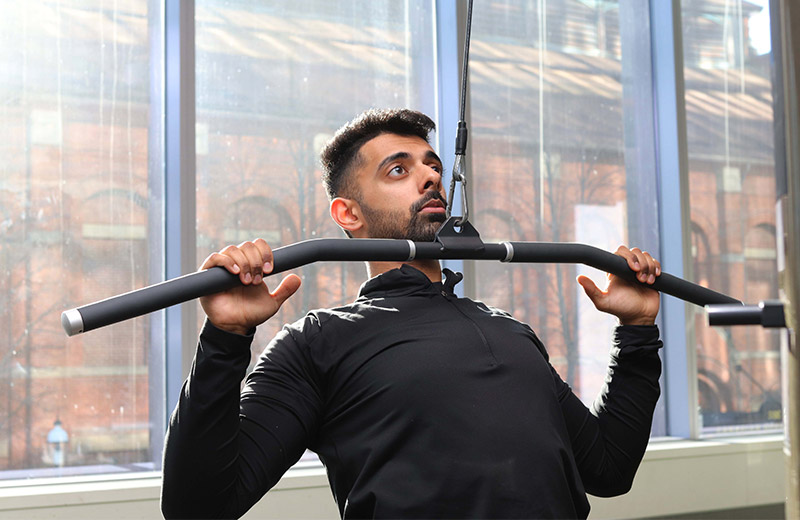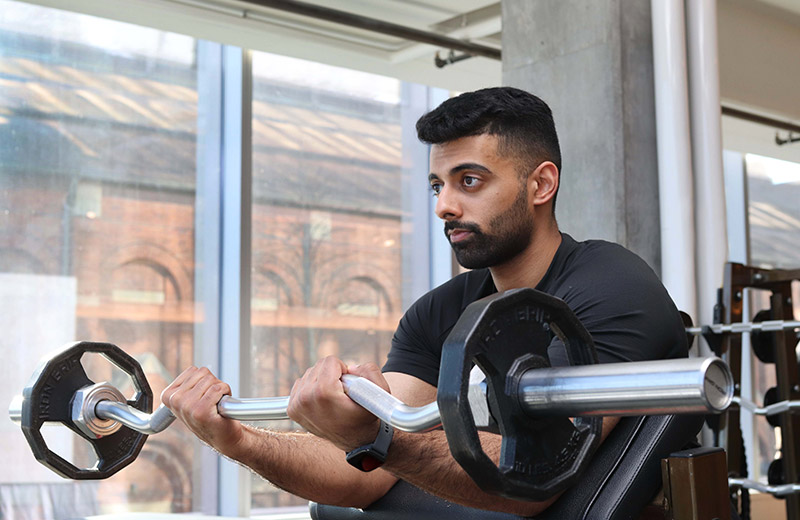Personal Trainer
Introduction
In our everyday lives, we often take measures to prepare ahead of time for various situations. For instance, when winter is just coming around the corner, we make sure we have our winter tires put on our cars, so we can drive safely in the snow. Similarly, if you have a test coming up, you prepare by studying to make sure you do your best. We can all appreciate the benefits that come through preparation. However, when it comes to preparing our bodies for the physical and mental demands that life throws our way, we seem to shy away. So why not be proactive and build a proper physical foundation to prepare your body for potential challenges, to optimize the way you experience life?

What is Prehab?
When I was an instructor for the Preventative and Rehabilitative Instructional on Movement and Exercise program (PRIME), I worked with a student, Jacob (name has been changed to protect identity), who would have benefited tremendously from prehab. Jacob was playing volleyball with his friends and unfortunately tore his MCL from landing incorrectly after he had jumped for a spike. As a result of no previous experience in exercise training, he was not aware of proper landing techniques and could not control the position of his knee. If he had gone through prehab, he would have had the knowledge and strength to control his landing mechanics and would have drastically reduced his risk of injury.
Broadly defined, prehabilitation is a preventative strategy that involves training your body to prepare yourself, both mentally and physically, for any obstacle you might face. Depending on what you are preparing for, prehab may include general strengthening or conditioning exercises, sport/task specific exercises, stretches, nutritional advice, or strategies for improving mental well-being.
The most common scenario for prehab to be prescribed is for those who may be going into surgery for a specific injury. Many studies have shown that participating in a prehabiltiation program four to eight weeks before surgery improves rate of recovery post-surgery. Engaging in prehab prior to surgery may allow you to experience fewer and better cope with any potential side effects, leave the hospital sooner, decrease the need for rehab after surgery, and ultimately have better long-term health.
Prehab can be even more broadly applied to anyone who wishes to remain injury free. For example, performing a full body warm up routine before a workout is a form of prehab. By performing simple exercises or stretches in the warm up, your body will be better able to get into specific positions more easily and have ultimately reduced your risk of injury.
How Does Prehab Work?
Prehabilitation typically involves three stages:
1. Assessment

The assessment allows us to define your starting point. During the assessment, we’ll consider factors such as body weight, muscular strength, cardiovascular fitness, mental well-being, nutrition and sleeping habits. In Jacob’s case, the assessment would have allowed us to determine things such as the range of motion in his knee, or his ability to control the position of his knee throughout various movements. By collecting this information, we obtain a holistic background of your health and determine the best methods to satisfy your needs so you can meet your goals!
2. Intervention

The intervention is a uniquely tailored plan that uses the information gathered in the assessment to effectively achieve your goals. It focuses on four lifestyle behaviours:
- Physical activity
- Nutrition
- Sleep
- Mental health
Had Jacob gone through prehab, his program would have included exercises that would have strengthened the muscles around his knee, ensuring he was following an appropriate diet and sleep schedule that would allow him to optimally recover from his training sessions, as well as strategies to maintain and/or improve his mental health (e.g., mindfulness) if needed. Addressing these 4 components will help you improve your overall health and well-being, prepare you for any demands you may face, and ultimately live a longer, happier, and healthier life!
3. Monitoring

Monitoring involves regularly taking note of your progress throughout the prehabilitation process. This will help you understand what kind of changes are happening to your body as a result of your intervention. For example, if you just completed an 8-week prehab program without monitoring your progress, you may feel better, but you would not know:
- What changes happened to your body
- Which component of the intervention had the most impact
- What parts of the intervention could have been improved on
By monitoring your progress, you’re able to see the exact changes in things such as strength, flexibility, balance, sleep quality, nutritional habits, and mental well-being. In addition, if you aren’t making as much progress as you should, monitoring would allow you to recognize this and make any changes as necessary to ensure you are on track to meet your goals.
Conclusion
Prehab is one of the most valuable things you can do for your body and overall health. If you take the time and effort to get your body ready for the challenges you’ll face, you may surprise yourself at what you will be able to accomplish!
